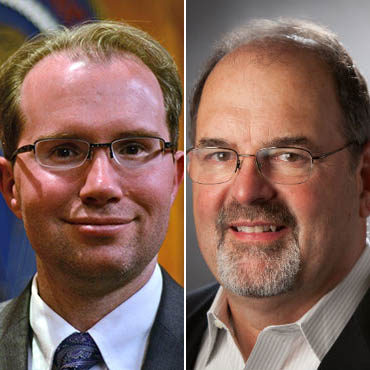Top feds talk agile

Federal leaders discussed agile's promise and the notion that the government-changing approach could yield positive results far beyond IT – if feds can stomach it.

FCC CIO David Bray (left) and U.S. Chief Information Officer Tony Scott agreed that some employees need to be eased into agile.
Sometimes you just need to tell folks, “This is going to be awkward,” said Federal Communications Commission CIO David Bray.
Bray was one of several senior government leaders talking all things agile – opportunities and challenges alike – at the Partnership for Public Service’s Aug. 4 agile IT panel.
Ease them into ‘death’?
Federal CIO Tony Scott noted that agile is not a “jump in the pool, learn how to swim” situation, especially for government veterans unused to continuous delivery, rapid sprints and constant changes.
Scott advised putting old employees on teams to let them practice new approaches for maybe 10 percent of their time at first.
“Don’t blow up their entire life,” he said.
Bray echoed Scott’s advice, to a degree, recalling how when he was making big changes at the FCC, he would periodically bring coffee and donuts to an empty conference room and send out an open invitation that anyone who wanted to talk through the changes come could chat.
Those chats were helpful, giving employees a place to voice their concerns (though Bray noted that when he came to the FCC in 2013, the average employee had been there 15 ½ years and the average contractor had been around for 19, meaning change going to be disruptive for virtually everyone.)
But at the end of the day, management and leadership are two different things.
“The root of the word leadership is ‘leith,’ which means ‘send unto death,’” Bray said.
To fully realize the potential of agile, he said, you’ll have to take the kind of bold action that risks alienating some of your workforce.
Powerful benefits, never-ending work
“As agile began to take momentum in our profession, some thought of it as an excuse to get rid of things that are just good practice: project management, design principles, good coding techniques,” said Scott. “I don’t believe that.”
Instead, agencies should embrace the speed, tight feedback loops and continuous delivery of agile with effective practices from waterfall and other design methodologies, he said.
Scott added that he thinks government is still “immature as an industry” when it comes to understanding agile’s potential – and what it takes for agile to work.
Across agencies, there’s a danger that “antibodies come out and kill it” because it “looks different,” he noted.
“As a manager and as a leader, I think setting the right context [so that agile can survive] is the most important thing a leader can do,” Scott said.
For Kathryn Edelman, consultant in the General Services Administration’s 18F, agile has promise but “it’s not the be-all, end-all.”
Rather than a program management panacea, agile offers its biggest benefit in the form of questions it poses, she said: “What’s your vision? What do you need this to do? What problem are you trying to solve?”
Combined, they’re a “very simple, yet very challenging question,” she noted. “A clear product vision is not the same as an 800-page requirements document.”
Government often fails to check in with end users, be they average citizens or industries affected by regulations, but agile’s rich feedback loop affords a reminder to the bureaucratic machine.
“Actually talking to the user has a lot of power beyond the IT space,” Edelman said.
All told, agile could be a “powerful recipe for changing how we think about and actually do the business of government,” she noted.
And eventually, the operations and maintenance budgets of the past will disappear – assuming government can accomplish the mighty task of scrapping its legacy systems in favor of cloud-based solutions – to be replaced by agile’s constant hum of “development, modernization and enhancement.”
“If you’re doing it right, you’re probably never done,” Edelman noted.
NEXT STORY: A vote of confidence for USPTO telework


